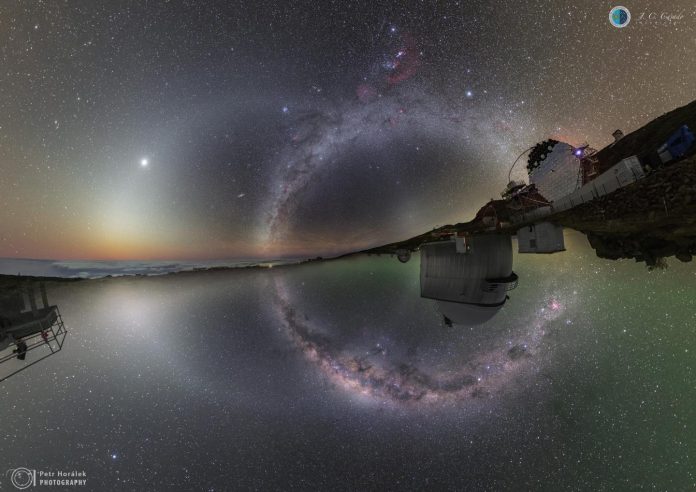
The brightness of the night sky is the subject of endless poems and songs, but how does it look without light pollution?
This year, scientists found that the first galaxies in the universe were much denser than they previously thought. They also figured out that the rough age of the galaxy is around 14 billion years.
Now, scientists are using low-cost photometers to measure the brightness of the night sky – without the light interruptions offered by Earth. Astrophysicists looked up at the sky from 44 of the darkest places on Earth, including the Canary Island Observatories.
They took 11 million measurements to figure out the true brightness of the night sky.
How dark is the night sky?
It isn’t dark, contrary to what you can see some nights.
There is a constant glow in the sky created by natural components, then by artificial lighting coming off the Earth. The Moon, Milky Way and Zodiac light is recognisable.
Estimates suggest that more than 10% of the Earth’s surface receives artificial light and that this figure increases to 23% if we include the atmospheric skyglow. Roughly 80% of the human population lives in places with light pollution, and around a third of them cannot see the Milky Way.
Roughly 80% of the human population lives in places with light pollution
But after those things, there is a glow that dominates sky brightness depending on the time of year, geography of looking up and the solar cycle.
What is a Solar Cycle?
Solar Cycles are periods of celestial activity lasting 11 years.
The solar maximum is when the activity of the Sun has grown, sunspots appear on its surface, and its radiative emission has grown. This impacts the molecules in the Earth’s atmosphere, causing an increase in the brightness of the night sky.
When all of this is lessened, this is described as the solar minimum.
Researcher says there is new evidence of ‘airglow’ interaction
Miguel R. Alarcón, a researcher at the Instituto de Astrofísica de Canarias (IAC) and first author of the article, explained that there are: “systematic observations of short period variations (of the order of tens of minutes, or of hours) in the brightness of the sky, independently of the site, the season, the time of night, or of solar activity, and which have been shown, for the first time, with low cost photometers, to be associated with events produced in the upper layers of the mesosphere, that is to say to the ‘airglow’.”
Success for the ‘high sensitivity of low-cost photometers’
Miquel Serra-Ricart, an astronomer at the IAC and a co-author, said: “This work has demonstrated the high sensitivity of low-cost photometers if they are linked in a network. The final analysis of the full set of TESS photometers shows the Gegenschein, a faint glow in the night sky, visible around the ecliptic, the same plane on which we see the zodiacal light and the planets.
“The network of photometers has shown, yet again, that the Canary Observatories are in the First Division.”










